JCRB0232.1 SKG-IIIb
Cell information
Cell type:general cells (View Pricing Information)
| JCRB No. | JCRB0232.1 | Cell Name | SKG-IIIb |
|---|---|---|---|
| Profile | Human tumor cell line with non-keratinizing type squamous cell carcinoma from cervical tumor. Temperature sensitive growth was observed. | Other Name | |
| Animal | human | Strain | |
| Genus | Homo | Species | sapiens |
| Sex | F | Age | 38 |
| Identity | not done | Tissue for Primary Cancer | uterine cervix |
| Case history | large cell non-keratinizing type squamous cell carcinoma | Metastasis | |
| Tissue Metastasized | Genetics | tumor markers, TA-4, hCG, behta-hCG, PP7 | |
| Life Span | infinite | Crisis PDL | |
| Morphology | epithelial-like | Character | The cell line was expected to be derived from an intermedially differentiated squamous cell carcinoma. Growth of the cell line SKG-IIIb was suppressed at 39 C. |
| Classify | tumor | Established by | Udagawa,Y. & Nozawa,S. |
| Registered by | Nozawa,S. | Regulation for Distribution | |
| Comment | The cell line was contaminated by mycoplasmas when deposited to the cell bank and they were eliminated in FDSC(JCRB). | Year | 1990 |
| Medium | Ham's F12 (pH.7.2) medium with 10% fetal calf serum. | Methods for Passages | Cells were harvested after treatment with 0.1% trypsin and 0.02% EDTA. |
| Cell Number on Passage | 1.5 x 10^5 cells/sq.cm. | Race | Japanese |
| CO2 Conc. | Tissue Sampling | cervix of uterus | |
| Tissue Type |
| Detection of virus genome fragment by Real-time PCR | |||||||||
|---|---|---|---|---|---|---|---|---|---|
| Detected DNA Virus | tested | Detected RNA Virus | tested | ||||||
| CMV | - | parvoB19 | - | HCV | - | HTLV-1 | - | ||
| EBV | - | HBV | - | HIV-1 | - | HTLV-2 | - | ||
| HHV6 | - | HTLV-1 | - | HIV-2 | - | HAV | - | ||
| HHV7 | - | HTLV-2 | - |
-/negative. +/positive. nt/not tested. (positive (+) does not immediately mean the production of infectious viral particles.) |
|||||
| BKV | - | HIV-1 | - | ||||||
| JCV | - | HIV-2 | - | ||||||
| ADV | - | HPV18 | - | ||||||
| Notes | Partial HPV16 DNA lacking E1 region is integrated in host genome, and apparently not exists as 8 kb circular DNA (revealed by Southern blot analysis (J. Gen. Virol, 68: 583-591, 1987)). | ||||||||
| Reference | |
|---|---|
| Pubmed id:11092985 | Regulation of dihydropyrimidine dehydrogenase and pyrimidine nucleoside phosphorylase activities by growth factors and subsequent effects on 5-fluorouracil sensitivity in tumor cells. Ueda M,Kitaura K,Kusada O,Mochizuki Y,Yamada N,Terai Y,Kumagai K,Ueki K,Ueki M Jpn J Cancer Res. 2000 Nov;91(11):1185-91 |
| Pubmed id:10545752 | Biological implications of growth factors on the mechanism of invasion in gynecological tumor cells. Ueda M,Ueki M,Terai Y,Ueki K,Kumagai K,Fujii H,Yoshizawa K,Nakajima M Gynecol Obstet Invest. 1999;48(3):221-8 |
| Pubmed id:9378537 | Stimulatory effects of EGF and TGF-alpha on invasive activity and 5'-deoxy-5-fluorouridine sensitivity in uterine cervical-carcinoma SKG-IIIb cells. Ueda M,Ueki M,Terai Y,Morimoto A,Fujii H,Yoshizawa K,Yanagihara T Int J Cancer. 1997 Sep 17;72(6):1027-33 |
| Pubmed id:9355022 | Inhibitory effects of ubenimex (bestatin) on the invasion of uterine cervical carcinoma cells and their production and activation of gelatinase A. Ueda M,Ueki M,Fujii H,Yoshizawa K,Nakajima M J Med. 1997;28(3-4):175-90 |
| Pubmed id:2212803 | [The mechanism of cytotoxicity of monoclonal antibodies to gynecological cancer cell-lines]. Iida S,Nozawa S Nihon Sanka Fujinka Gakkai Zasshi. 1990 Jul;42(7):667-74 |
| Pubmed id:3032185 | Conservation of E6 and E7 regions of human papillomavirus types 16 and 18 present in cervical cancers. Takebe N,Tsunokawa Y,Nozawa S,Terada M,Sugimura T Biochem Biophys Res Commun. 1987 Mar 30;143(3):837-44 |
| Pubmed id:3029293 | Integration and transcription of human papillomavirus type 16 and 18 sequences in cell lines derived from cervical carcinomas. Shirasawa H,Tomita Y,Sekiya S,Takamizawa H,Simizu B J Gen Virol. 1987 Feb;68 ( Pt 2)():583-91 |
| Pubmed id:3122483 | Anticellular activities of human fibroblast interferon beta and human recombinant interferon gamma. Cytologic changes in a cervical cancer cell line. Iwasaka T,Yoshimura T,Ohkuma Y,Tsugitomi H,Sugimori H Acta Cytol. 1987 Nov-Dec;31(6):941-5 |
| Pubmed id:3794454 | [Sensitivity to etoposide in cultured cells from cervical squamous cell carcinoma]. Maeda T,Ueda M,Yamada T,Kubo H,Okamura S,Sano T,Ueki M,Sugimoto O Nihon Sanka Fujinka Gakkai Zasshi. 1986 Nov;38(11):2050-6 |
| Pubmed id:6209350 | [Peplomycin sensitivity of various types of human gynecological cultured tumor cells]. Ueda M,Nozawa S,Ueki M,Sano T,Nagai S,Sugimoto O,Kurihara S Nihon Sanka Fujinka Gakkai Zasshi. 1984 Oct;36(10):1867-76 |
| Pubmed id:6699456 | [Biological properties of two newly established cell lines (SKG-3a,3b) from a human uterine cervical epidermoid carcinoma]. Udagawa Y,Nozawa S,Tsukazaki K,Ohta H,Akiba T,Kurihara S Nihon Sanka Fujinka Gakkai Zasshi. 1984 Feb;36(2):237-46 |
| Pubmed id:6600963 | Newly established uterine cervical cancer cell line (SKG-III) with Regan isoenzyme, human chorionic gonadotropin beta-subunit, and pregnancy-specific beta 1-glycoprotein phenotypes. Nozawa S,Udagawa Y,Ohta H,Kurihara S,Fishman WH Cancer Res. 1983 Apr;43(4):1748-60 |
| Images |
|---|
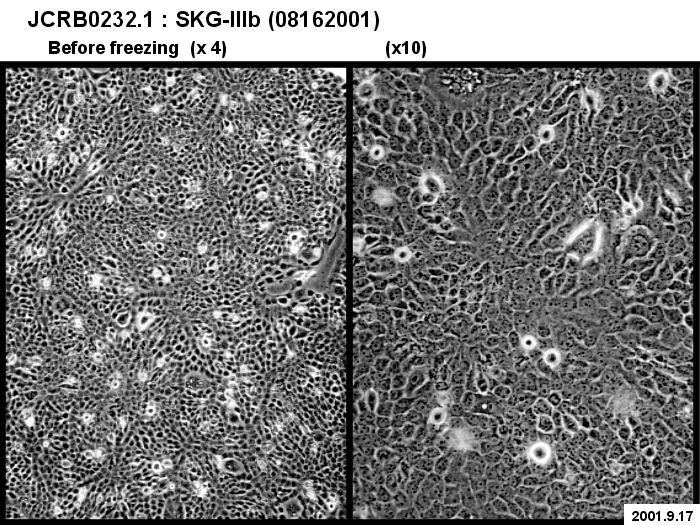   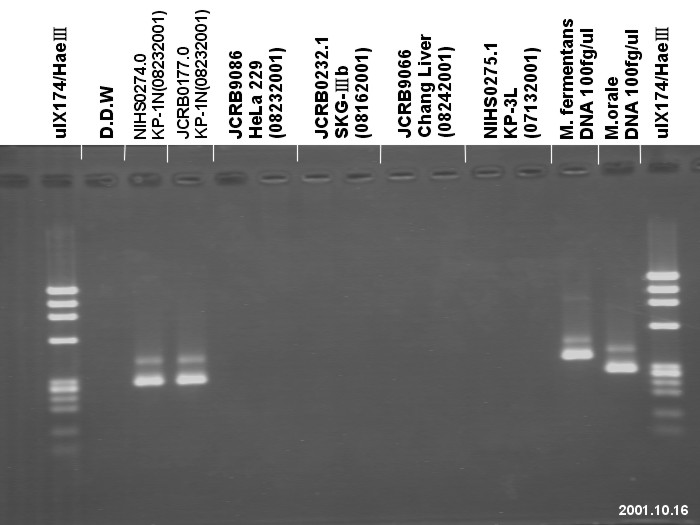 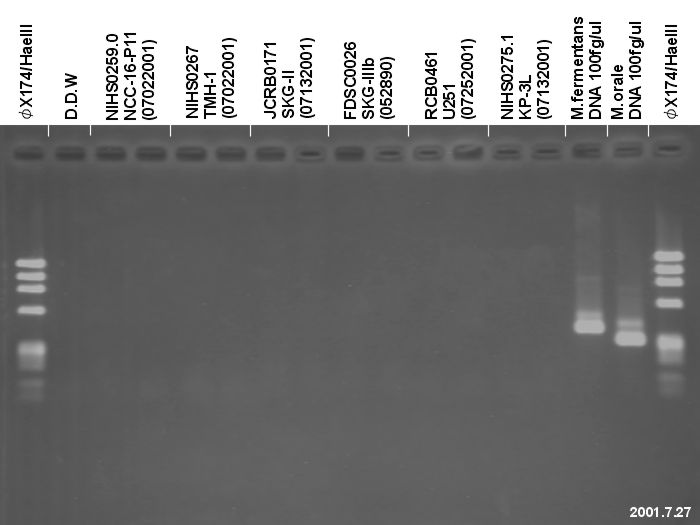 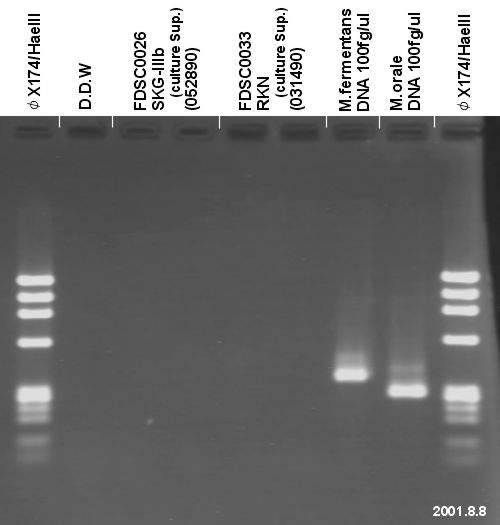  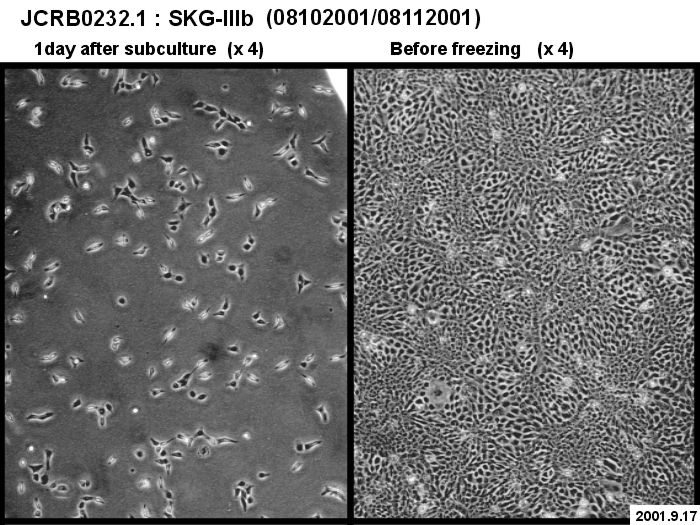 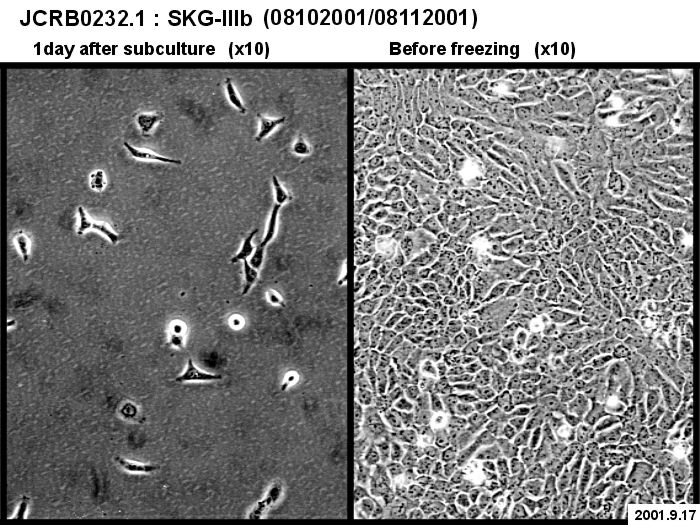 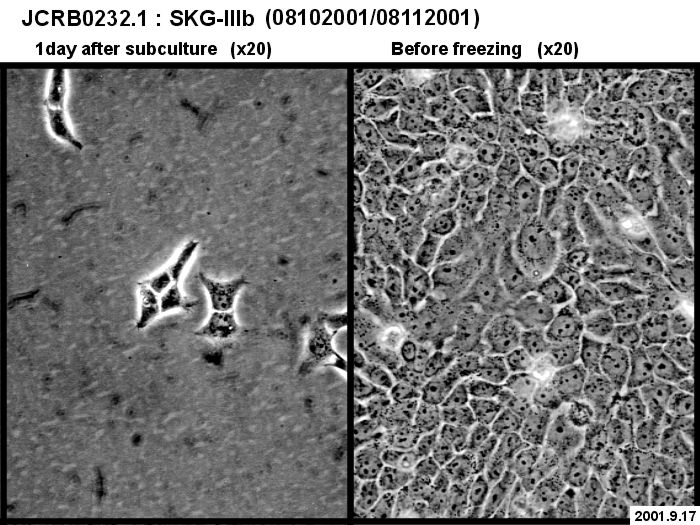 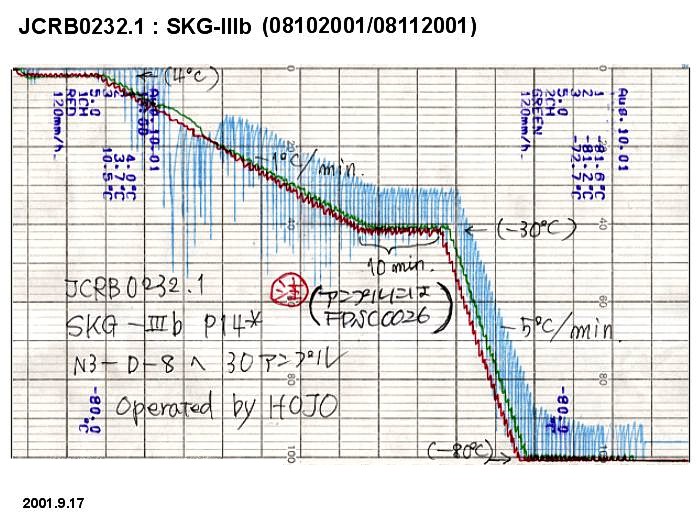 |
| Movies |
|---|
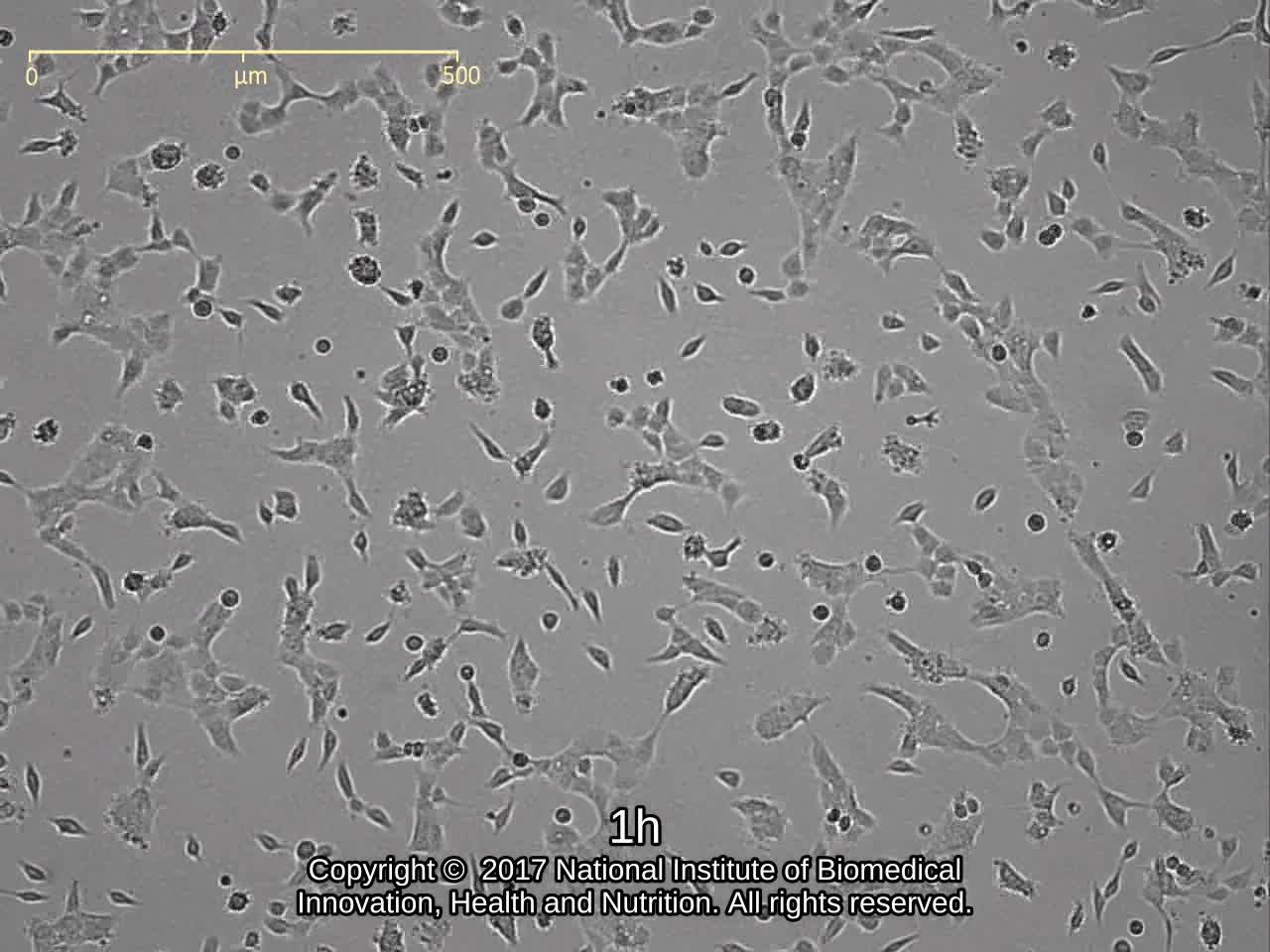
|
LOT Information
| Cell No. | JCRB0232.1 | Cell Name | SKG-IIIb |
|---|---|---|---|
| LOT No. | 08162001 | Lot Specification | distribution |
| Medium | Ham's F12 medium with 10% fetal bovine serum (Intergen RB52405). | Temperature | 37 C |
| Cell Density at Seeding | 6.0 x 10^4 cells/ml | Methods for Passages | Cells were harvested after treatment with 0.25% trypsin and 0.02% EDTA for 5 minutes at 37 C. Subculture once a week and medium change twice a week. |
| Doubling Time | NT | Cell Number in Vial (cells/1ml) | 3.8 x 10^6 |
| Viability at cell freezing (%) | 96.3 | Antibiotics Used | free |
| Passage Number | P15* | PDL | NT |
| Sterility: MYCOPLASMA | - | Sterility: BACTERIA | - |
| Sterility: FUNGI | - | Isozyme Analysis | NT |
| Chromosome Mode | NT | Chromosome Information | NT |
| Surface Antigen | NT | DNA Profile (STR) | D5S818:10,11 D13S317:12 D7S820:10,12 D16S539:9,11 VWA:16 TH01:6,9 AM:X TPOX:8,11 CSF1PO:11,12 |
| Adhesion | Yes | Exoteric Gene | NT |
| Medium for Freezing | Culture medium containing 5% DMSO. | CO2 Conc. | 5 % |
| Viability immediately after thawing (%) | Additional information |
| Images |
|---|
    |